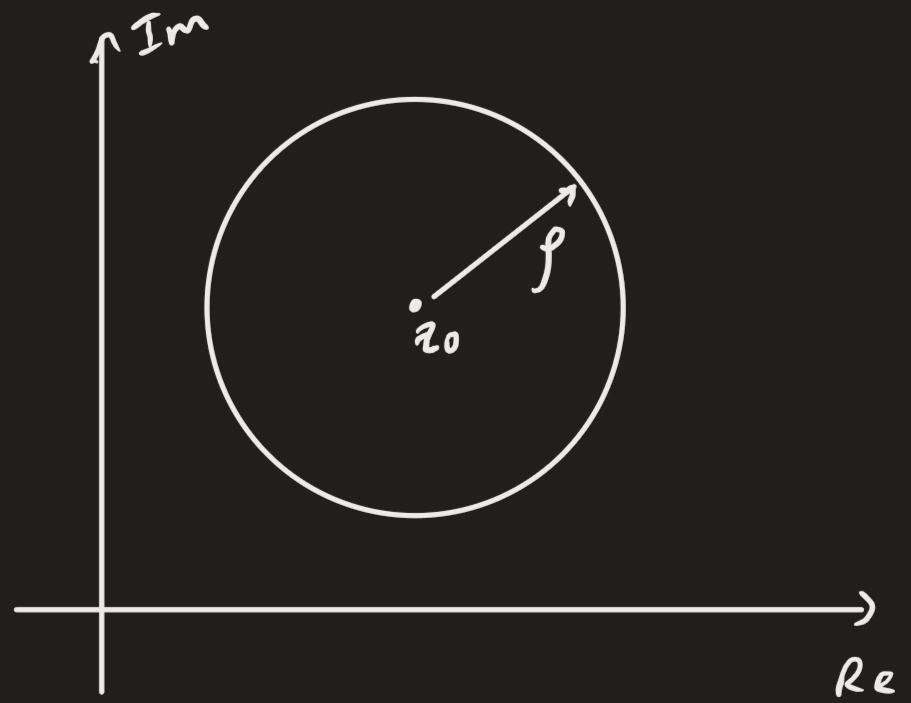We extend the set of real numbers with the set of complex numbers, , which we can represent in a few different ways. Several applications of complex numbers include signal processing, control theory and dynamical systems, and discrete mathematics. The study of complex numbers is complex analysis.
Fundamentals
We can express complex numbers in rectangular form with an imaginary unit but sometimes with (especially in electrical engineering, where it conflicts with current).
In , we can represent complex numbers as vector on an Argand diagram (where the -axis is the real axis and the -axis is the imaginary axis. If , then:
If , is purely real. If , is purely imaginary. We can also express (in the rigorous definition) as an ordered pair of real numbers: .
The modulus of a complex number is defined as the non-negative real number, denoted by or sometimes .
Also, if we have a point , for some circle of radius :
 We define the complex conjugate for some complex number as:
We define the complex conjugate for some complex number as:
Observe that .
Operations
For two complex numbers and , we define:
- Addition as:
- Multiplication as: (distribute the terms)
- And we divide with the complex conjugate of the denominator:
In general, complex numbers continue to follow the rules of real numbers: associativity, commutativity, and distributivity.
Polar form
Also called modulus-argument (polar) and exponential (Euler) form. Using the modulus , we can express in terms of its argument (angle). We also define .
Where the trigonometric function came from is not random — we can use the Maclaurin expansion for where . Part of the expansion is the same as the one for and part for . Polar form is substantially easier to multiply and divide two complex numbers and .
Note that we denote the argument of with , and the principal argument with .
Observe the implications of the above geometrically. The result of multiplying complex numbers will scale their moduli accordingly and sum their angles.
For powers of polar-form complex numbers for , we have De Moivre’s theorem.